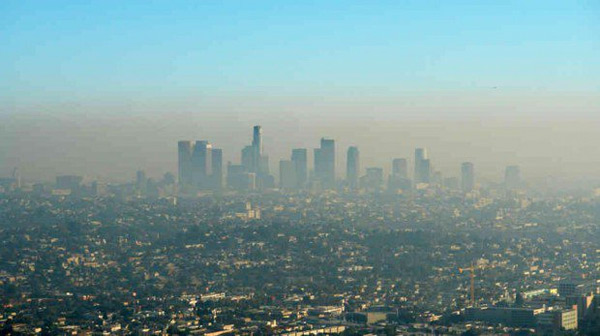 From the founding of America, the Fourth of July has been synonymous with fireworks. While many grew up learning that fireworks can be dangerous to the eyes and hands if not handled properly, fireworks also produce air pollutants, including particulate matter, that are linked to short-term or long-term health effects.
From the founding of America, the Fourth of July has been synonymous with fireworks. While many grew up learning that fireworks can be dangerous to the eyes and hands if not handled properly, fireworks also produce air pollutants, including particulate matter, that are linked to short-term or long-term health effects.
NOAA scientist Dian Seidel and Abigail Birnbaum, a student intern at NOAA, have authored a new study appearing in the journal Atmospheric Environment that quantifies the surge in fine particulate matter — particles that are two and one half microns in diameter (PM2.5) — on July 4, using observations from the 315 U.S. air quality monitoring sites that operated from 1999 to 2013. While scientists have known that fireworks displays produce a surge in fine particulates, the new study is the first nationwide quantitative analysis of the effects.
“We chose the holiday, not to put a damper on celebrations of America’s independence, but because it is the best way to do a nationwide study of the effects of fireworks on air quality,” said Seidel, a senior scientist at NOAA’s Air Resources Laboratory in College Park, Maryland. “These results will help improve air quality predictions, which currently don’t account for fireworks as a source of air pollution. The study is also another wake up call for those who may be particularly sensitive to the effects of fine particulate matter.”
PM2.5 are microscopic particles that can affect health because they travel deep into a person’s respiratory tract, entering the lungs. Both long- and short-term exposures to fine particles are linked to a range of health effects — from coughing, wheezing and shortness of breath, to asthma attacks, heart attack and stroke, and premature death in people with heart or lung disease. People with heart or lung disease, older adults, and children are among those most at risk from particle pollution exposure.
The new research shows that hourly concentrations of fine particulate matter typically reach their highest levels, when compared to the days before and after July 4, on the evening of July 4. Levels drop back down by noon on July 5, according to the research. On average, the increases are largest from 9-10 p.m. on the holiday. Average concentrations over the 24-hour period starting at 8 p.m. on July 4 are 42 percent greater than on the days preceding and following the holiday.
Increases in fine particulate matter concentrations varied from location to location, due to how close the fireworks were to the monitoring site and variations in weather conditions. At one location, where fireworks are set off in a field adjacent to air quality monitoring instruments, particulate matter concentrations rose 370 percent on the holiday, well above the 24-hour fine particle standard of 35 micrograms per cubic meter.
The Environmental Protection Agency’s rules accommodate the tradition of using fireworks on the Fourth of July and at other cultural events, by allowing states to demonstrate that the short-term PM2.5 spikes measured on July 4 and 5 were influenced by fireworks display and should not be used in determining whether an area has violated the agency’s 24-hour PM2.5 standards.
And while the EPA does not regulate fireworks, the agency does recommend that people who are considered sensitive to particle pollution try to limit their exposure by watching fireworks from upwind — or as far away as possible. People with asthma should follow their asthma action plans and be sure to have their quick relief medicine handy. The study done by NOAA Headquarters.